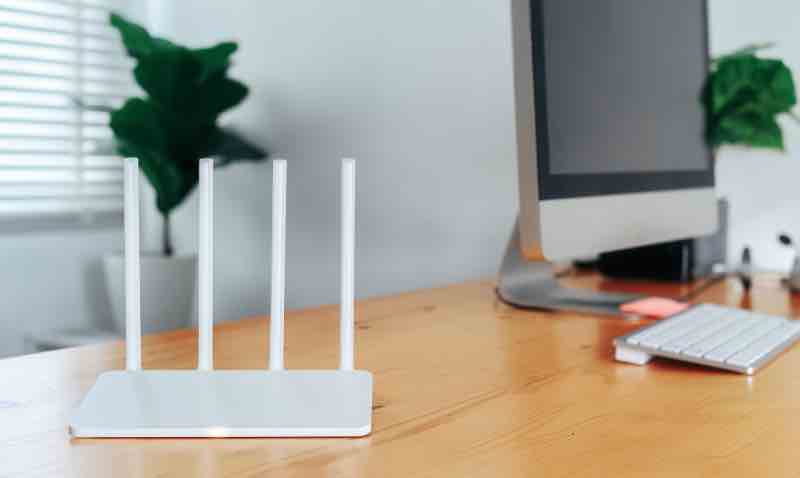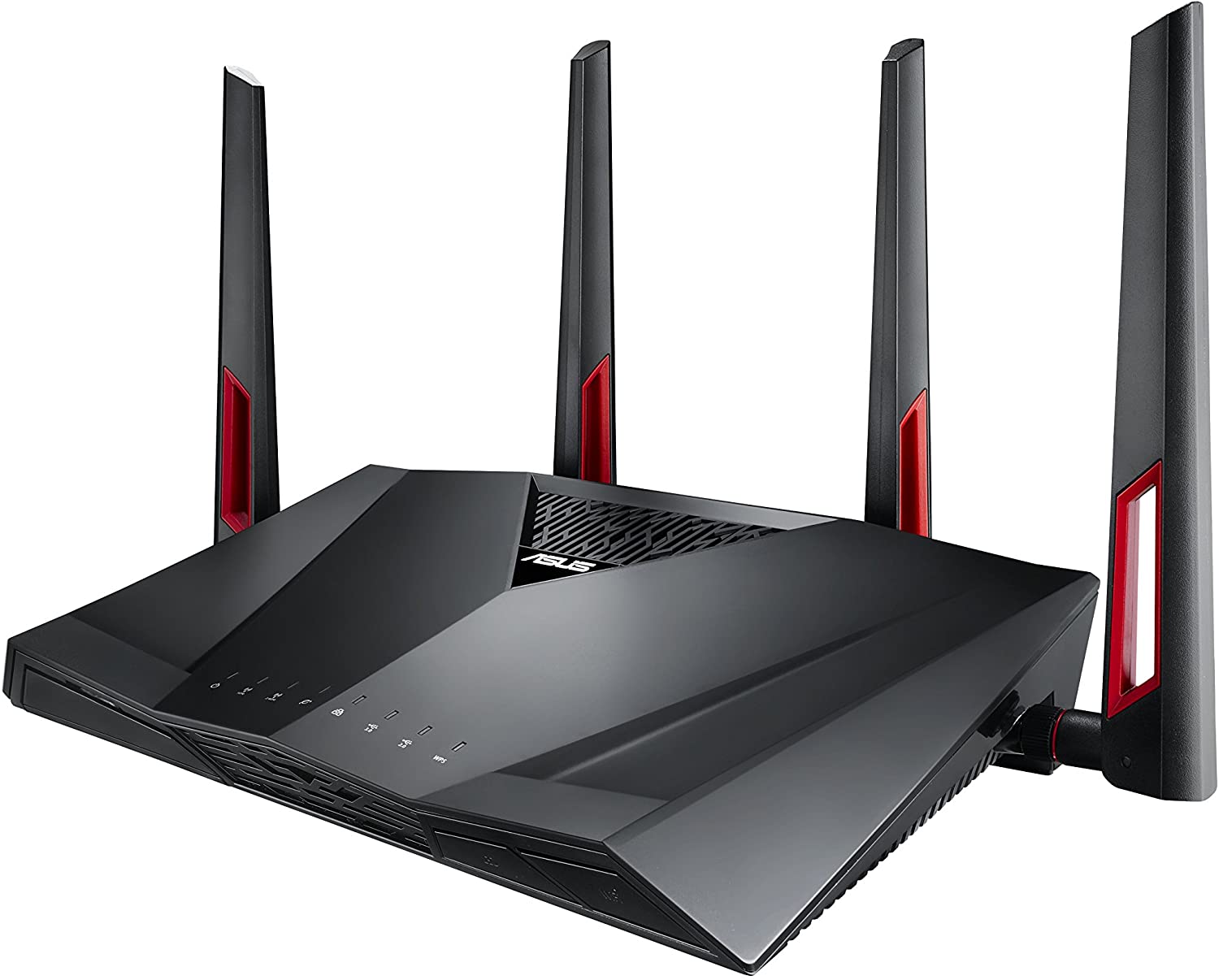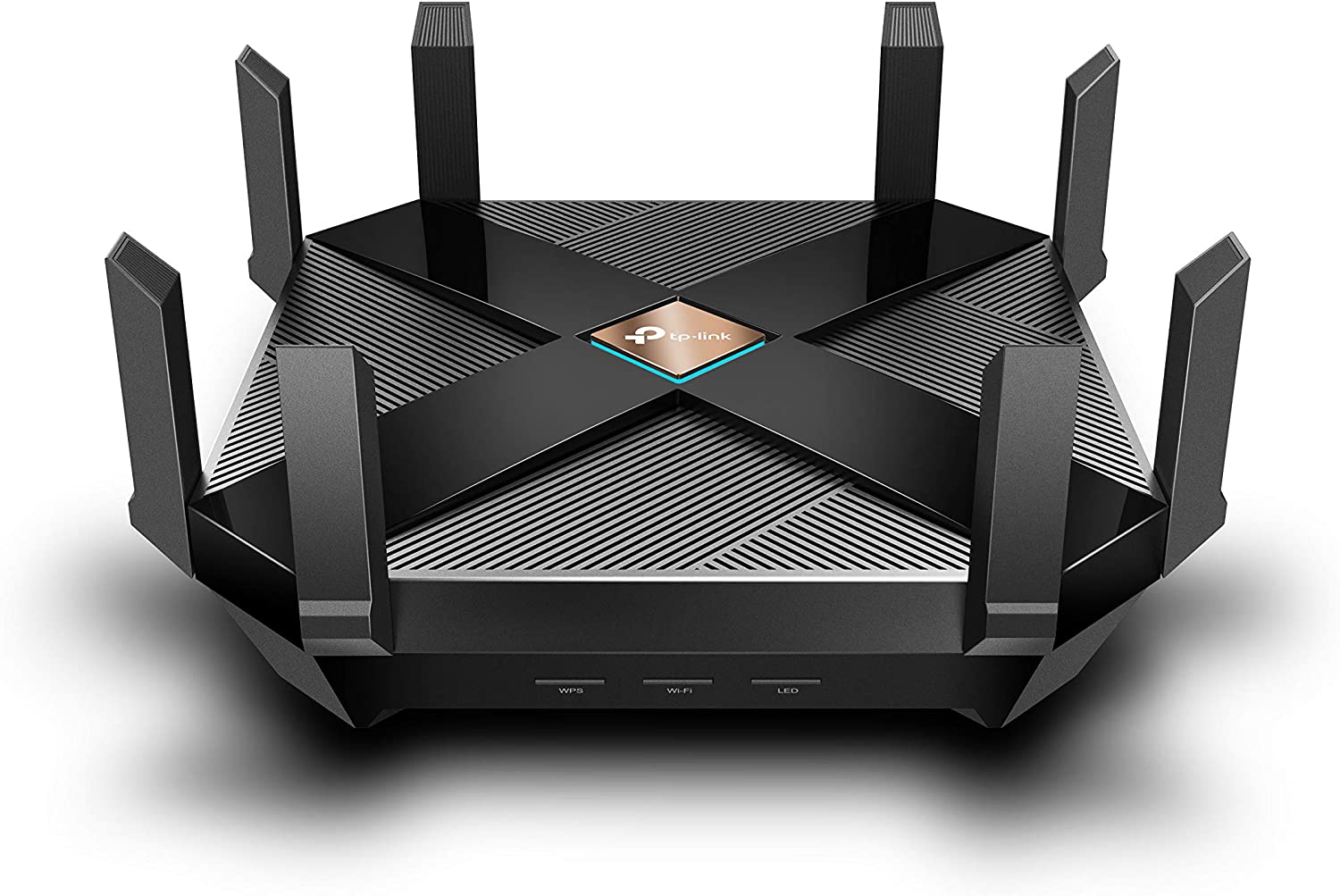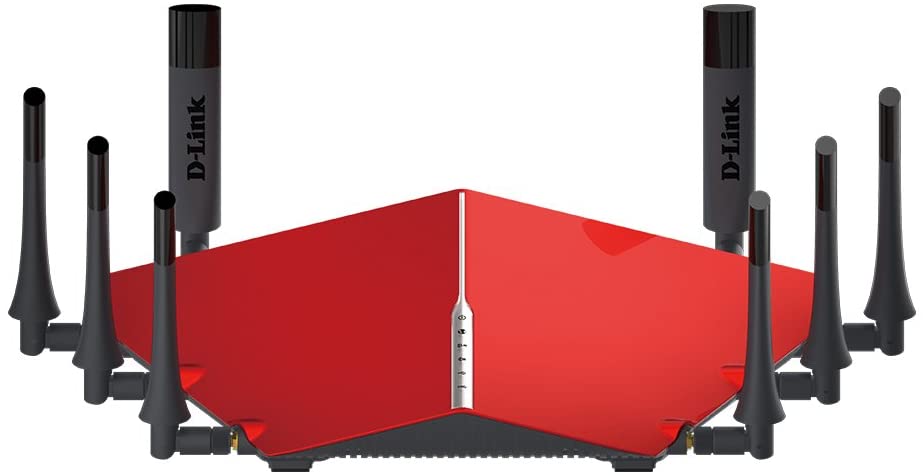Top 10 Best WiFi Router For Long Range
We have the best ideas for you if you want the best wifi long range router for your house. To achieve great speed and effective coverage, it is now necessary to have an efficient long range WiFi router. We also have bad network problems in homes with difficult layouts. A substantial number of people have worked from home since the outbreak of coronavirus. School children from around the world attend their classes online in an attempt to stay healthy and safe. It is even more necessary to buy a long range WiFi router in unprecedented times.
The only device connecting to the internet was the PC and the laptop. It wasn’t much longer. Each home today has a variety of devices such as PC, laptop, iPad, smartphone, TV, and other IOT devices. Therefore the conventional modem is limited to the dustbin. Instead the roost has been operated by the WiFi router. With people concurrently using these devices, and even in various rooms in the home, a high-quality long range WiFi router should be invested.
These routers are also useful for multiple connections to the internet in an office environment. Your WiFi router nowadays not only links you, but also connects you. This post discusses the best WiFi routers available in the USA, 4K and long distance home and work place. Here is the best home network and reviews of our high quality routers for a variety of needs and budgets.

Which Long Range WiFi Router is Best?
ASUS RT – AC88U is the best long range wifi router you can use, its a dual-band router with a large range of capabilities and an equally big price tag is the Asus RT-AC88U. It uses MU-MIMO technology for Multi-Users to support multiple Wi-Fi clients, without losing bandwidth simultaneously.
Benefits of WiFi Router for Long Range
While the majority of WiFi routers are only for indoor applications, implementation is by no means limited to a couple of options. In very specific situations, these devices can still be deployed at various locations and serve a multiplicity of functions without compromising their performance. WiFi long range router are often divided into two broad categories:
1. Home
The great popularity of mobile devices and laptops nowadays means that many households have Wi-Fi routers. In certain families in particular large households that have home offices, can also find long-range versions, despite the commonness of short-range Wi-Fi routers.
Large houses use the capabilities of wireless long-haul routers, since only 2–3 traditional home Wi-Fi routers can comfortably work with one system of such calibre. That means that a home network needs fewer equipment, fewer cables and less space.
2. Business
For many factors, Wi-Fi routers are popular in companies. In addition to having an online presence for the vast majority of businesses, which also require non-stop Internet access, companies receiving large numbers of visitors such as coffee shops often offer their employees Wi-Fi as an additional service. A Wi-Fi router in a firm means an easy way of running a private network and providing far more efficient instruments for analysing and marketing strategies.
Long range wireless routers are an excellent alternative for companies since long-distance models are generally better than traditional routing systems. This is especially helpful because businesses do need reliable power and production. It supports expansion as well.
Long range WiFi router can also be used in unconventional situations. The same technology also enables the transfer of video footage from the camera to the computer, to connect telephone calls between environments or to enhance robbery efficiency. There are limitless options.
How to Use a WiFi Router for Long Range?
When you’re nearest to them both connectors have the best signal. If you move farther forward the weaker is the signal. Therefore, both outside as well as point-in-point networks use high-performance and high-gain antennas to expand the spectrum of their wireless signals.
1. Long Range Outdoor Networks
The key reason why WiFi links don’t go outside is the blocking or weakening of the signal by building materials and obstacles. All challenges can be circumvented by outside extensions and the internet can be expanded to your backyard, farm and camper.
Many people use extension systems and networks to expand their external web coverage. The devices work well, but must only cover a certain range within a certain distance from the router. The range can be also expanded with Outdoor WiFi Access Points (AP). You can attach a long-range WiFi antenna to the AP with a SMA connector to expand the WiFi range even further.
2. Long Range Point to Point Networks
There are also cases of people sharing their webs with a house – a barn, a workshop, a neighbourhood or an office building. The building can be a few metres to a few miles from the main building, depending only on the property’s scale.
Routers can cover areas up to 150-300 metres under optimal conditions. This is not enough, in most situations, to enter a detached house. Long range point-to-point systems help to expand the internet connection between the two buildings.
To pull the signal from the building with the secure internet link – source, a long-range WiFi antenna (usually a guided WiFi antenna) and a WiFi repeater are required. Certain models need only one antenna for the device, others require an antenna to the source house.
The antennas should preferably be mounted on the building’s roof. The antenna on the detached building must have a clear view with the source building or second antenna for optimum use. The antenna will take the signal out of the source after the initialization process and the router will relay the signal to other users inside the building to enjoy it. But some people require only a single computer internet connection. In order to achieve this result, there are two methods:
- The Ethernet cable linked to the router is connected to the internet. It can simply be connected to a desktop, laptop, game console or Smart TV by unplugging the cable.
- You should use a USB WiFi adapter rather than a router. The USB attaches to your device and collects the wireless signal through its antenna. You can unlock the regular antenna and attach any long range wireless antenna if you want to increase the range of the antenna. To attach the antenna to the USB adapter, a coaxial cable is required. You will collect an internet from a distance with the new antenna.
A good point-to-point device offer is better access in free internet areas. Free WiFi can be hit or skipped in campsites for instance. You will see immediate improvements in your link if you mount a point to point network on your VR and point the antenna to the source.
Top 10 Best Wifi Router For Long Range
1. ASUS Dual-Band Gigabit WiFi Gaming Router (AC3100)

Highlight:
With its thoughtlessly crafted user interface, RT AC88U provides a variety of management options with blazing outputs for both 2.4GHz and 5GHz bands.
A dual-band wifi router with a large range of capabilities and an equally big price tag is the Asus RT-AC88U. It uses MU-MIMO technology for Multi-Users to support multiple Wi-Fi clients, without losing bandwidth simultaneously. In order to take advantage of technology, however each client must have a MU-MIMO compatible network adapter.
Pros
- USB Super-fast.
- Smartphone Software Advanced.
- Eight ports of Ethernet.
- Strong hardware which can handle multiple customers and connections at the same time.
Cons
- Wireless 5 GHz band coverage is not that trustworthy.
- The price does not apply to all.
2. NETGEAR Orbi Tri-band Whole Home Mesh WiFi (RBK50)

Highlight:
All of them are easy to instal and operate and they are not inexpensive. Although the Orbi router and the satellite are large and their USB ports aren’t ready for prime time, the device still has ample time to make our home Wi-Fi editors option.
The Netgear Orbi RBK50 is a capable Wi-Fi device for larger spaces, which offers fast wireless connectivity in your home area. It’s a breeze, provides several wired LAN ports and is ready for MU-MIMO installation. It provides Wi-Fi solutions in the entire home consisting of a router and one or more satellites.
Pros
- Easy installation.
- Netgear Orbi Multiple user.
- Multiple input.
- Multiple output.
- Highly configurable.
Cons
- Bulky.
- Expensive.
3. TP-Link AX6000 WiFi 6 Router, 8-Stream Smart WiFi Router

Highlight:
The device uses a black-colored enclosure with eight folding antennas on the top and a square LED indicator. When everything goes right, it glows in a solid blue hue. In the meantime it will glow in orange, if Internet access is not available.
Archer AX6000 is the first TP-Link to support the new Wi-Fi 6 standard (802.11ax). The router is large and features multiple antennas, high-level hardware and various functionality. The TP-Link Tether mobile app is easy to handle from a computer.
Pros
- Fast file transfer.
- Solid parental control.
- Malware protection.
- Easy installation.
Cons
- Expensive.
- Limited mobile app control.
- Large footprint.
4. NETGEAR Nighthawk 12-Stream AX12 WiFi 6 Router (RAX120)

Highlight:
The Netgear AX12 is the router that will take care of not just today but the future-proof WI-FI 6 standard. After WiFi-6 arrived, things changed, meaning a router fitted with the AX WiFi norm. The second router from the Wi-Fi 6 family is the Netgear Nighthawk AX12.
Asus launched the first regular ‘AX’ router – Asus RT-AX88u – the first one we used. Now it’s Netgear Nighthawk’s turn to let people know the power of a slick, powerful built router.
Pros
- Beautiful and innovative design.
- Google Assistant compatible and Amazon Alexa.
- Innovative network interface multi-gig feature.
- AX optimized 64-bit processor @2.2 clock speed.
Cons
- It is non-mountable.
- Expensive.
- Bulky.
5. NETGEAR Nighthawk 8-Stream AX8 WiFi 6 Router (RAX80)

Highlight:
Shaped like a futuristic starship, the RAX80 has an impressive feature set including five gigabit LAN ports, a strong quad-core processor, and naturally 802.11ax, also called Wi-Fi 6.
As the first of the 802.11ax routers to reach our laboratories, Netgear’s Nighthawk AX8 8-Stream Wi-Fi 6 Router is a part of the Asus RT-AX88U.
Pros
- Easy installation.
- Fast file transfer.
- Strong 5GHz throughput.
Cons
- Expensive.
- Lacks anti – malware tools.
6. Asus ROG Rapture GT-AX11000 Tri-Band 10 Gigabit WiFi Router

Highlight:
It also provides excellent networking functionality overall. This is the first router we saw that supports wireless communications.
The GT-AX11000 Rapture is a triple-band 4×4 MU-MIMO wireless router with many functions to boost playback. These include bandwidth control, priority traffic and integration with the wt fast gaming network, which guarantees a consistent connection with minimal delay.
Pros
- RGB lighting that looks good.
- Designed for gamers.
- Router with next gen wireless.
- Parental control.
Cons
- No USB ports.
- Big in size.
7. TP-Link AD7200 Wireless WiFi Tri-Band Gigabit Router (Talon AD7200)

Highlight:
The TP-Link Talon AD7200 dwarfs a big press. It has an outstanding architecture. It has an intelligent antenna that enables all nice antennas to be folded carefully. This router is designed to concentrate on consistency.
The TP-Link Wi-Fi router Talon AD7200 is what we think is the best available 802.11ad router today. We don’t just see this as the best, we have also noticed a range of cutting-edge characteristics that make this router exceptionally good. However it gives several values in terms of its features.
Pros
- Smooth performance with powerful CPU.
- Easy to set up.
- Extremely fast speeds.
Cons
- Expensive.
- Poor range.
- Router size is large.
8. D-Link Ultra AC5300 WiFi Router with 8 High Power Antennas (DIR-895L/R)

Highlight:
A sleek, fully loaded three-band router with some of the fastest possible file transfer and performance test results, is the D-Link DIR-895L Ultra Wi-Fi Router.
This is a HD Video and Gaming Ultimate Router. The D-Link AC5300 MU-MIMO Ultra Wi-Fi (DIR-895L) provides the very best efficiency for the hardest tasks such as 4K video streaming, replay, and multi-device use.
Pros
- LED indicators.
- Gigabit Ethernet ports.
- A WAN port.
- Smart connect.
- Upgradeable antennas.
Cons
- Expensive.
- MU – MIMO barely works.
9. Linksys MR8300 Mesh Wi-Fi Router (Tri-Band Router, AC2200)

Highlight:
The Linksys MR8300 is a Wi-Fi tri-band router, which can also be used to form a mesh network when combined with a Velop node. It is a good performer, but it has some main features such as malware security and robust parental controls.
A dual router is double performance of a dual band. Due to the combined 2.2 Gbps speed and quad-core CPU, households with heavy WiFI connectivity can have fast data transfers.
Pros
- Block specific websites.
- Parental control.
- External antennas.
- Smart connect.
Cons
- Expensive.
- Poor range.
10. TP-Link AC5400 Tri Band WiFi Gaming Router(Archer C5400X)

Highlight:
The TP-Link Archer C5400X provides high driving speeds and integrated malware security as well as support for Alexa voice commands and IFTTT applets. A router designed for gaming enthusiasts.
You spent hours finding the right pieces for your playground. The Archer C5400X now takes advantage of it – the router equipped for the high-end gaming systems to power output.
Pros
- Parental control.
- Eight gigabits LAN ports.
- Compatible with NAS devices.
- Anti – malware utilities.
Cons
- After 3 years of use, you have to pay for built-in antivirus.
- No two – step verification.
- Expensive.
Bottom line
Over all there are various considerations one has to take into buying a WiFi router. The long range router might be expensive sometimes, but you have to check whether it is worth it or not, the anti – virus, the speed it offers, the installation, connection, range. A long range router might be a worthwhile upgrade, that is if you have a big house or a slow speed internet.